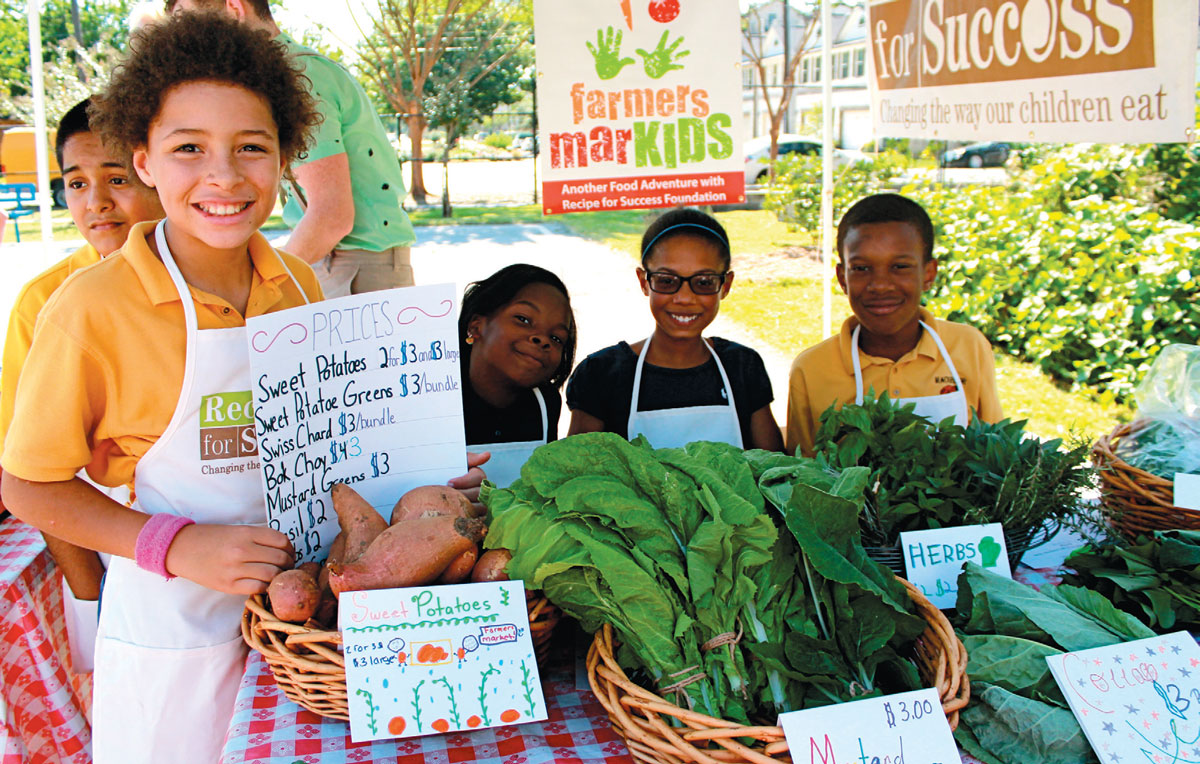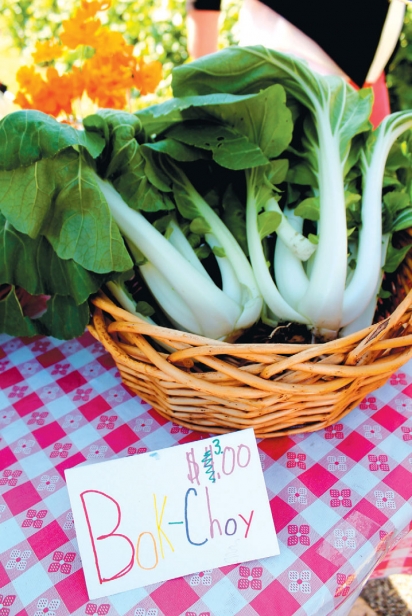Sowing, Growing, Selling
farmers marKIDS
Program helps students sell the food they grow
Last year, after nearly a decade of connecting children with their food through hands-on culinary and garden lessons, Recipe for Success Foundation sprouted a sweet idea: Use the garden to teach financial literacy. They named the resulting program Farmers MarKIDS.
Developed as a guide for facilitators and students, the 50-page Farmers MarKIDS curriculum outlines how to transform a garden’s bounty into a working farm stand. Lessons cover everything an entrepreneur should consider when starting a business, from establishing goals, an inventory of resources and a budget to pricing, marketing and selling their wares. The idea flourished out of excitement surrounding Recipe for Success’ summer camps, in which kids create and market their own food product.
Justin Myers, the Foundation’s director of agriculture and gardens, believes these lessons to be crucial for youngsters. “There’s an economic component to many parts of your day, so learning about managing money and how things are marketed and sold helps them better understand how society works.” This knowledge is empowering. It serves as a tool to navigate healthy choices, to consider why they’re attracted to this cereal or that yogurt over another.






